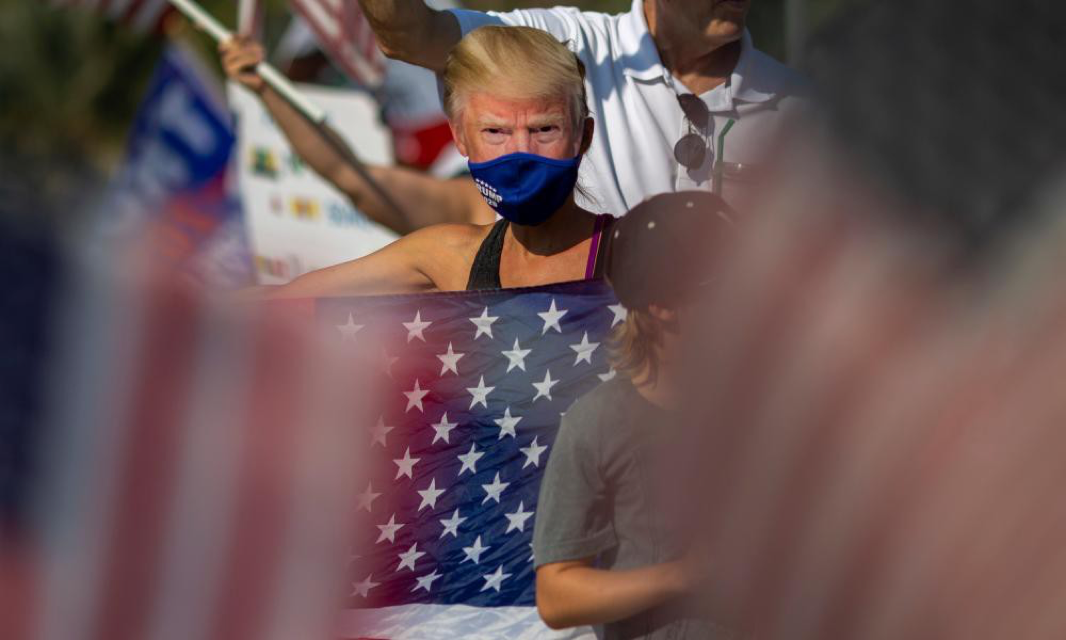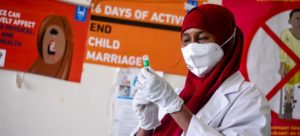After black women helped push Trump from office, Seyward Darby’s work on white extremists is more resonant than ever
It’s not Proust, Nietzsche or even Toni Morrison when it comes to difficult reading, but some are sure to find Seyward Darby’s book even more arduous to wade through.
It’s not that it is inscrutable. Indeed, as engaging as it is adroit, Sisters in Hate offers an excellent explanation for the ascent of Donald Trump amid a triumphal resurgence of white supremacy, sexism and xenophobia. A journalist, Darby focuses on Trump’s success through the experience of three individual and distinct women. Apart from gender and reactionary politics, there’s only the year of their birth, 1979, to link them. Each took a divergent path to arrive at what she saw as a battle to save white identity, deemed by all three to be America’s “true identity”.
Oregon native Corinna Olsen, a former porn star and bodybuilder, has mostly survived as an undertaker, specializing in embalming. She is Darby’s sole repentant sister. Admirably, all along her erratic odyssey she sought to shield her young daughters from a hatred of difference she was first reluctant to admit but gradually came to accept. Her search to fit in, leading to an embrace of white nationalism, was sparked by the death of her skinhead-adherent brother. Today, swastika tattoos obscured, she’s a Muslim convert, teaching martial arts to black girls as wistful as she once was.
Ayla Stewart hails from Las Vegas. Between looking after six children as a Mormon “tradwife”, she has become a minor celebrity in her malevolent milieu with blogged and broadcast racist rants. How did she evolve thus, from being a vegan feminist who worshiped a pagan goddess and supported liberal Democrats like Dennis Kucinich? Only by slow degrees. Eventually, suspecting a plot to discredit her, Stewart stopped confiding in Darby. But she was plenty happy to tell her story at first, and it is riveting.
The third sister in hate, Lana Lokteff, was born to Russian immigrants in the Pacific north-west but is now a resident of quaint and gracious Charleston, South Carolina. Like her Swedish husband Henrik Palmgren, the pale and slender blonde is perfectly Aryan-looking. Together the neo-Nazi pair operate Red Ice TV. Produced abroad since being banned on YouTube, it is widely considered the CNN of the alt-right. Espousing apocalyptic antisemitic conspiracy theories, the pair have generated notoriety as well as wealth.
The particular appeal of women as spokespersons for a movement so blatantly misogynistic, Darby tells us, is what makes female recruits such valued members. It’s akin to the prominent placement of black people behind the podium at Trump rallies or front-and-center among the ranks of the Proud Boys. Both offer plausible deniability of bigotry.
“Today,” Darby writes, “the savviest white nationalists are aware of the blind spot that observers often have when it comes to women, discounting their contributions to abhorrent causes because they prefer to think of them as humanity’s better angels.
“One of this book’s subjects,” she continues, “put it this way: ‘A soft woman saying hard things can create repercussions throughout society.’” In same the vein, Lokteff noted at a conference: “Since we aren’t physically intimidating, we can get away with saying big things. And let me tell you, the women in this movement can be lionesses and shield maidens and Valkyries.”
Startling as this is, it is not much different from Sarah Palin’s memorable characterization of gun-toting Alaskan soccer moms as “pit bulls in lipstick”. How perverse is the desire of some women to show fidelity and worth by matching the contempt for others held by men? What does this growing ruthlessness mean?
In 2016, some 6 to 9 million citizens who had supported Barack Obama, voted for Trump. Nearly 50% of white women did. This November, in even greater numbers, one-time Obama voters sought to re-elect Trump. As hard as it is to imagine, he gained still more adherents among women.
All three “sisters” who spoke to Darby do not like being thought of as racist haters. Yet their disdain, their race- and class-based derision, born of envy, ignorance and fear, is real enough. Lyndon Johnson posited that if someone can make the worst white feel they are superior to the best black, their subject’s pocket can be easily picked. Of late, more than 600 billionaires have gained double the wealth held by 331 million Americans. One might imagine that the time was ripe for the masses to join ranks.
The total indifference displayed towards the humanity and contributions of people of color and more is what makes Sisters in Hate so painful to read. Considering the genocide and theft to which Native Americans were subjected, African enslavement or the Holocaust, one might regard each tragic episode as holding the promise of a happy ending. These struggles were a testament of our common resolve. We can all say, “We shall overcome!”
But can America’s resurgent white nationalism and antisemitism be surmounted? The prospect is pessimistic, Darby concedes, writing of the how the dismantling of hegemony and patriarchy feel like discrimination to many entitled whites.
“Black people are the magical faces at the bottom of society’s well,” wrote Derrick Bell. “Even the poorest whites, those who must live their lives only a few levels above, gain their self-esteem by gazing down on us.”
Perhaps America’s happy ending will come from heeding the lessons of history. In the turbulent 1960s, willing to be brutalized, black and white demonstrators protested successfully for change. This year, in the wake of enduring police violence, diverse masked protesters marched anew worldwide.
In the same spirit, risking all, more voted than ever before. But, overwhelmingly, those who made the difference on election day were women of color. Our sisters in hope?




